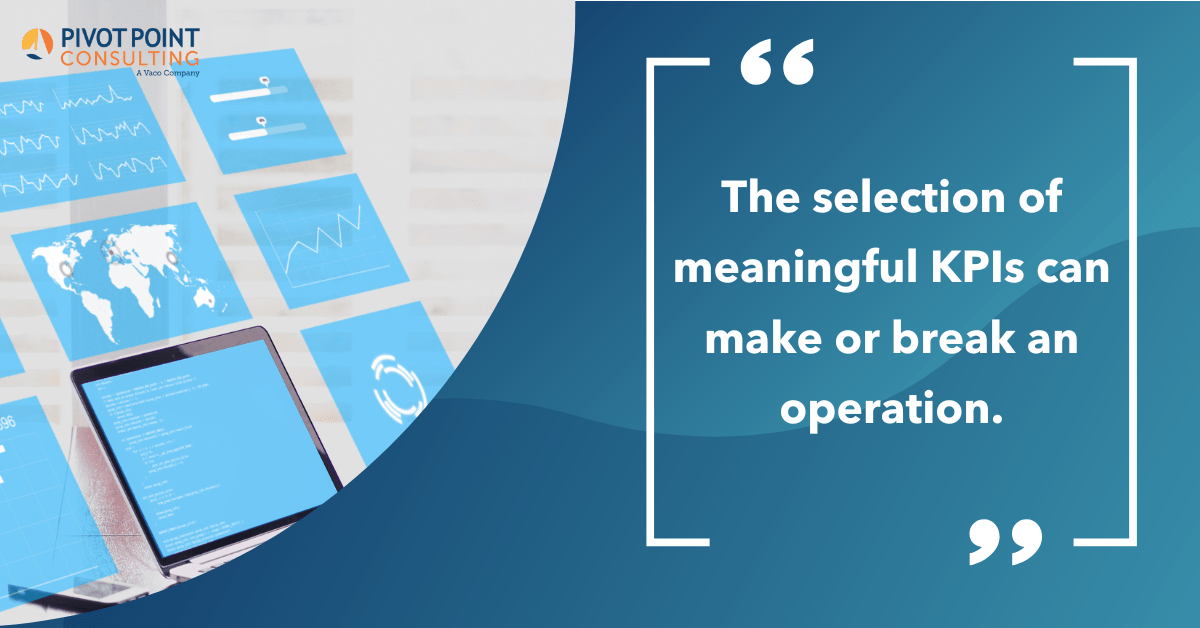In an industry focused on cost savings through operational efficiencies, understanding key goals and tracking progress and outcomes through metrics is essential. As the saying goes, “10% of something is better than nothing.”
The selection of meaningful KPIs can make or break an operation, as it can determine whether the process is performing well enough to secure additional funding or whether it needs to be shut down.
Here are 5 keys to unlock metrics that matter for process improvement:
1. Does the metric align with organizational strategy?
The two primary drivers for most healthcare organizations are improving patient care and practicing financial responsibility. Metrics that don’t fall under these strategic pillars won’t hold weight with executives. Organizations can focus on program populations by tweaking common metrics such as reducing readmissions or length of stay (LOS), both of which tie back to improving patient care and practicing financial responsibility. Frequent readmissions indicate poor management of chronic conditions, while increased LOS leads to a higher risk of hospital-acquired conditions. Both of these metrics are closely monitored by CMS and they have financial implications for reimbursement.
2. Is the metric an accurate representation of program performance?
While the end goal of a program receives the most attention, implementing metrics that monitor the process is equally important. Since no process is perfect, it’s advisable to deploy several checkpoint metrics to ensure efficacy. When downstream metrics start dipping in performance, stakeholders can easily pinpoint the step where the breakdown occurred. Proactively monitoring the process saves time in identifying bottlenecks and areas of opportunity, thereby ensuring a smoother workflow.
3. Is it measurable?
Reporting requires attention to technicalities such as the cleanliness, reliability and accessibility of data. If data is not stored and organized in a usable manner, it can’t be quickly accessed for metric development and ongoing monitoring. To avoid this, ensure that your organization has well-developed workflows, data models and data capture. For example, if end users are not consistently entering data in a discrete data field, that data point is no longer a candidate for being a metric. In the reporting world, free text documentation is not a good candidate for building out a metric either.
4. What type of measurement best aligns with outcomes?
While metrics displaying the volume or count of a particular unit are commonly used and easily understood, they often don’t tell the whole story. For example, a program may impact a larger volume of individuals each month, but if the eligible population increases at a greater rate, the program’s impact rate decreases over time. Volume metrics are appropriate in certain circumstances, but it’s essential to be mindful of potential denominators that provide a bigger picture understanding of the situation and areas of opportunity. In such cases, percentages may offer a more accurate representation of the program’s impact.
5. Is the data digestible?
Executive sponsors should be able to quickly assess program success or lack thereof by glancing at a dashboard. Performance trends can be clearly displayed using techniques such as color-coded thresholds, goal lines or monthly trending line graphs. Directional goals should be established to indicate the desired direction for the metric. It should be easy for any viewer to see which metrics positively or negatively impact performance. Once these steps are complete, the story of the process can be shared with others regularly to track process efficacy.
Final Thoughts on Process Improvement
Process improvement is never easy, but with clear and concise metrics, as well as rigorous tracking through Data & Analytics-AI, healthcare organizations (HCOs) can identify and execute significant opportunities to improve both clinical and business performance.


